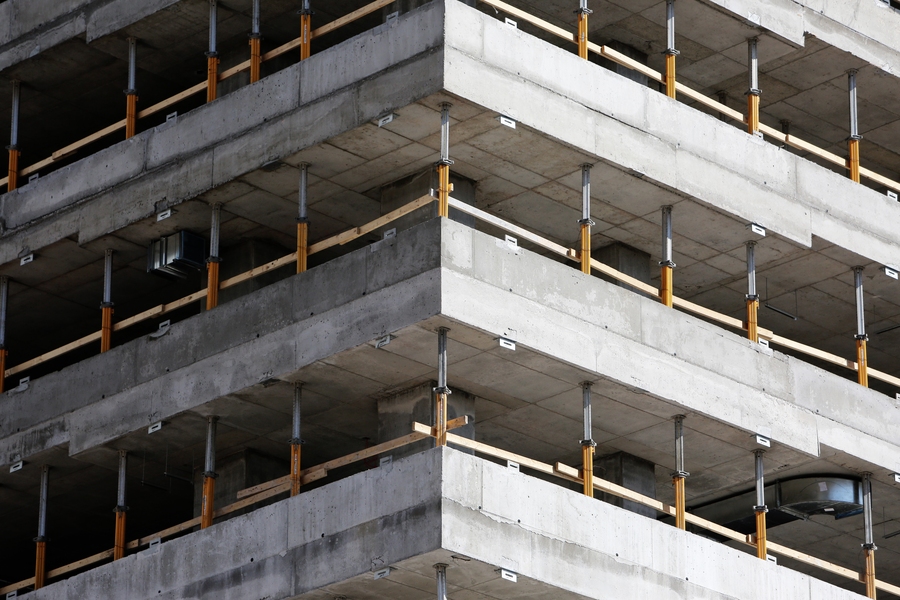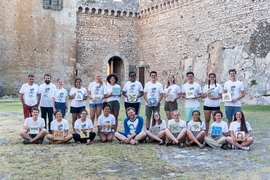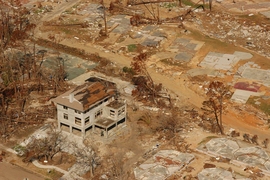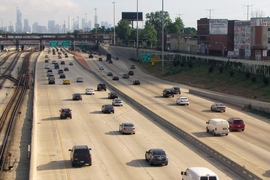The MIT Concrete Sustainability Hub (CSHub), an interdisciplinary team of researchers dedicated to concrete and infrastructure science, engineering, and economics, has renewed its relationship with its industry partners for another five years.
Founded in 2009, CSHub has spent a decade over two five-year phases collaborating with the Portland Cement Association (PCA) and the Ready Mixed Concrete Research & Education Foundation (RMC) to achieve durable and sustainable buildings and infrastructure in ever-more-demanding environments. Over its next five-year phase, CSHub will receive $10 million of additional funding from its partners to continue its research efforts.
“Taking CSHub’s work to the next level will not only help us achieve our goal of making concrete more sustainable, but will also continue to strengthen our communities by providing designers, owners, and policymakers with the best information and tools available to make the best choices for their construction projects,” says Julia Garbini, the executive director of RMC.
According to Michael Ireland, PCA president and CEO, CSHub’s past research has also allowed the industry to investigate the unique properties of concrete and cement. “For 10 years and counting, the MIT CSHub has helped the cement and concrete industry to identify and study the myriad benefits of its products,” he says.
Concrete, the world’s most-used building material, is made by mixing cement with abundant aggregate materials like sand and gravel. The result is an extremely strong and stiff material that can be produced nearly anywhere from readily available ingredients using relatively inexperienced labor. Concrete also offers numerous properties such as durability, formability, and thermal mass that can reduce energy consumption.
“On a per-unit-weight basis, concrete is a low environmental impact material,” says Jeremy Gregory, CSHub’s executive director. “It’s essential to our built environment due to its durability, strength, and affordability. As a consequence, it’s the most-used building material in the world and hence, there is a significant opportunity to look at how we balance both its role in sustainable development and lower its environmental impact.”
To do this, CSHub has taken a bottom-up approach, studying concrete from its nanoscale to its application in pavements and buildings, all the way to its role in urban environments and broader economic systems.
“Classical concrete science and structural engineering often use top-down approaches,” says CSHub Faculty Director and MIT Professor Franz-Josef Ulm. “You identify weaknesses at a large scale, go to a smaller scale, make a change, and then observe the response. It is different when you go from the bottom-up — you have all of the possibilities in front of you.”
Over the past decade, CSHub researchers have used this bottom-up approach to develop tools that measure the costs, environmental impacts, and hazard resilience of infrastructure and construction projects.
In 2018, they developed the Break-Even Mitigation Percentage dashboard to provide developers with data on the costs of hazard mitigation. The dashboard shows the return on investment for hazard-resistant construction. In some communities, researchers found that that return can come as early as two years.
Their investigation into the life cycle of buildings has also led to the creation of the Building Attribute to Impact Algorithm (BAIA), which informs designers of which aspects of a building will have the strongest impact on its life cycle cost and environmental impact.
Researchers have applied these same life cycle perspectives to pavements. A case study conducted with North Carolina’s Department of Transportation highlighted actions that could reduce spending on pavements by tens of millions of dollars while meeting or exceeding performance and emissions targets.
Recent CSHub materials science research has also informed the discovery of novel solutions to longstanding durability issues in concrete. In particular, researchers identified new explanations for two major causes of damage in concrete — freeze-thaw cycles and alkali-silica reaction.
“Whenever you touch old problems, there are perceptions that they are very difficult to change,” says Ulm. “However, here we applied a bottom-up approach to an old problem and found solutions that have not been looked at before.”
In the next phase of collaboration, CSHub will expand its scope to investigate concrete’s role in solving economic, environmental, and social challenges.
“We have done a lot of work in the past two phases on the technical aspects of concrete,” says Gregory. “What we are trying to do in this next phase is to conduct research that will engage the broader public by leveraging crowdsourced data, artificial intelligence, and the latest tools of data science.”
One Phase III project is already in development. Using their past work on pavements, CSHub researchers have created Carbin, an app that uses a smartphone to record pavement quality from within a moving vehicle. Through crowdsourcing, the app has recorded data on over 130,000 miles of roads across the world. The data will eventually support decisions on infrastructure maintenance at a far lower cost than that of traditional technologies, like laser scanning.
“With the CSHub now entering its third phase, we are excited about the opportunities this close industry-academia collaboration brings to MIT, the concrete industry, and society at large,” says Markus Buehler, Jerry McAfee Professor in Engineering and MIT Department of Civil and Environmental Engineering head. “Applying cutting-edge fundamental research to problems in industry has the potential for large-scale impact.”









